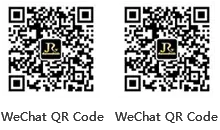How to Identify Quality Grinding Wheels: A Buyer’s Guide
How to Identify Quality Grinding Wheels: A Buyer’s Guide
Grinding wheels are crucial tools in various industries, serving as the backbone for cutting, grinding, and polishing materials. Choosing the right grinding wheel can significantly impact your work quality and efficiency. In this guide, we’ll explore how to identify quality grinding wheels, focusing on materials, types, and essential specifications to help you make an informed purchase.
Table of Contents
1. Understanding Grinding Wheels
2. Types of Grinding Wheels
2.1 Bonded Abrasive Wheels
2.2 Diamond Grinding Wheels
2.3 CBN Grinding Wheels
3. Key Features to Look For
3.1 Material Composition
3.2 Grit Size
3.3 Wheel Hardness
3.4 Wheel Diameter and Thickness
4. Understanding Wheel Specifications
4.1 ANSI and ISO Standards
4.2 Safety Ratings
5. The Importance of Wheel Balance
6. Selecting the Right Grinding Wheel for Your Needs
7. Common Mistakes When Buying Grinding Wheels
8. Frequently Asked Questions (FAQs)
9. Conclusion
1. Understanding Grinding Wheels
Grinding wheels are circular tools composed of abrasive particles that are bonded together. They serve various purposes, including grinding, cutting, and polishing. Understanding the different components and the roles they play in the grinding process is essential for selecting the right wheel.
2. Types of Grinding Wheels
The market offers a wide variety of grinding wheels, each designed for specific applications. Understanding these types will help you make a better choice.
2.1 Bonded Abrasive Wheels
Bonded abrasive wheels are composed of abrasive materials that are bonded together. They are used for general-purpose grinding and are often made from aluminum oxide or silicon carbide.
2.2 Diamond Grinding Wheels
Diamond grinding wheels are known for their durability and efficiency. They are primarily used for grinding hard materials, including ceramics and metals, making them a favorite among professionals.
2.3 CBN Grinding Wheels
Cubic Boron Nitride (CBN) wheels are ideal for grinding high-speed steel and other tough materials. They provide excellent performance and longevity, making them a popular choice in metalworking industries.
3. Key Features to Look For
When selecting a grinding wheel, several key features can help determine its quality and suitability for your needs.
3.1 Material Composition
The material used in the grinding wheel significantly affects its performance. For instance, aluminum oxide is versatile, while ceramic grain wheels offer superior durability and consistency.
3.2 Grit Size
Grit size refers to the coarseness or fineness of the abrasive particles. A finer grit (higher number) is used for smoother finishes, while a coarser grit (lower number) is ideal for material removal.
3.3 Wheel Hardness
Wheel hardness affects how the grinding wheel wears down. Softer wheels wear faster, which is beneficial for aggressive grinding, while harder wheels last longer and are suitable for finishing work.
3.4 Wheel Diameter and Thickness
The wheel diameter and thickness determine the wheel's capabilities and cutting depth. Larger and thicker wheels can handle more demanding applications, while smaller wheels are better for intricate work.
4. Understanding Wheel Specifications
When purchasing grinding wheels, it’s crucial to understand the specifications denoted by the ANSI and ISO standards.
4.1 ANSI and ISO Standards
These standards ensure safety and performance. Understanding these specifications can help you select wheels that meet industry standards.
4.2 Safety Ratings
Always look for wheels that comply with safety regulations. This ensures that the wheel can handle the intended workload without risking breakage or injury.
5. The Importance of Wheel Balance
Balanced grinding wheels provide smoother operation and reduce vibrations. An unbalanced wheel can lead to uneven wear, decreased tool life, and compromised safety.
6. Selecting the Right Grinding Wheel for Your Needs
Choosing the right grinding wheel requires an understanding of your specific applications. Consider the material you’ll be working with, the type of finish required, and the machine specifications.
7. Common Mistakes When Buying Grinding Wheels
Avoid making these common mistakes:
- Purchasing without considering compatibility with your grinder.
- Ignoring manufacturer recommendations.
- Overlooking safety certifications.
8. Frequently Asked Questions (FAQs)
What is the difference between bonded and diamond grinding wheels?
Bonded wheels are made of abrasive materials, while diamond wheels feature diamond particles for superior hardness and longevity.
How do I know the right grit size for my application?
The appropriate grit size depends on your desired finish. Coarse grits (36-60) are for rapid stock removal, while fine grits (120-600) are for finishing.
Can I use the same grinding wheel for different materials?
Not all wheels are suitable for every material. Always check the wheel's specifications to ensure compatibility with the material you are working on.
How do I maintain my grinding wheels?
Regular maintenance, including cleaning and proper storage, will extend the life of your grinding wheels. Avoid exposing them to moisture and keep them in a stable environment.
What safety equipment should I use while grinding?
Always wear appropriate safety gear, including goggles, gloves, and a dust mask, to protect against flying debris and harmful dust.
9. Conclusion
Identifying quality grinding wheels is essential for optimal performance in various applications. By understanding the types of grinding wheels, key features, and specifications, you can make informed purchasing decisions that enhance your work quality and safety. Always prioritize quality and compatibility to ensure your grinding processes are efficient and effective. With the right grinding wheel, you'll improve both productivity and results, whether you're cutting, grinding, or polishing materials.
key word:
grinding wheel
Online Message




